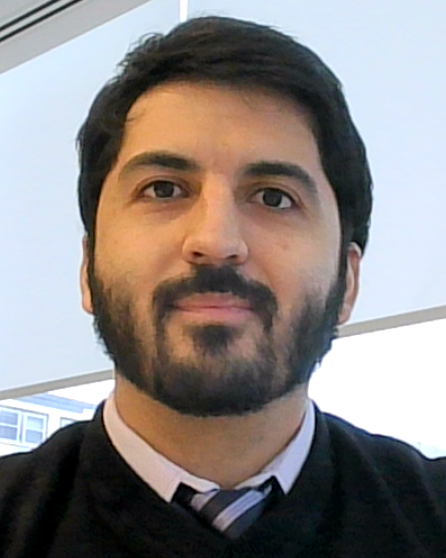
Carlos A. Ríos Ocampo
“For significant contributions to to the field of Optics and Photonics.”
Carlos A. Ríos Ocampo is an Assistant Professor at the University of Maryland (UMD) College Park, USA, with a joint appointment between the Department of Materials Science and Engineering and the Institute for Research in Electronics & Applied Physics. He joined UMD in August 2021 and currently leads the Photonic Materials & Devices group. Prof. Ríos Ocampo’s scientific interests focus on studying and developing new on-chip technologies driven by the synergy between nanomaterials and photonics. He has devoted most of his research efforts in the last decade to studying chalcogenide phase-change materials (PCMs) and their integration into photonic integrated circuits (PICs) and other nanophotonic platforms, leading some pioneering works and patents in the field.
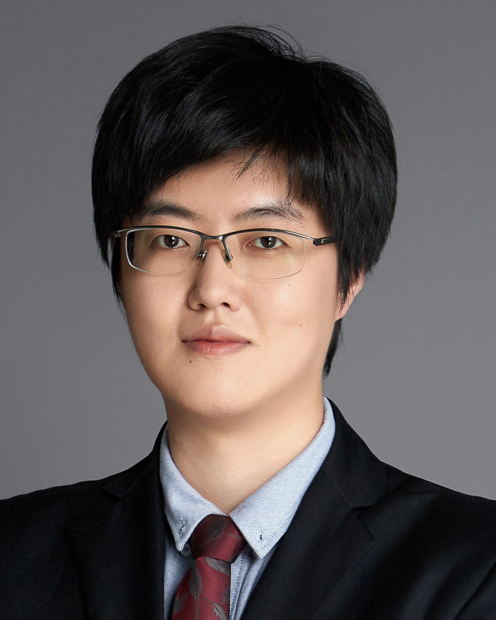
Chao Zuo
“For his seminal contributions to computational phase imaging and metrology, particularly noninterferometic quantitative phase imaging and high-speed phase measuring profilometry”.
Prof. Chao Zuo, from the Department of Optical Engineering at the Nanjing University of Science and Technology (NJUST), China, was awarded the ICO-IUPAP Young Scientist Prize in Optics 2022 “for his seminal contributions to computational phase imaging and metrology, particularly noninterferometic quantitative phase imaging and high-speed phase measuring profilometry.”
Chao Zuo received his B.Eng. degree from Zijin College, Nanjing University of Science and Technology (NJUST) in 2009. He was a Research Assistant at the Centre for Optical and Laser Engineering (COLE), Nanyang Technological University from 2012 to 2014, and a Visiting Research Fellow at the Institute of Applied Optics (ITO), University of Stuttgart in 2013. After receiving his Ph.D. from NJUST in 2014, Chao Zuo was exceptionally promoted to Associate Professor (2014) and Full Professor (2016) in the Department of Optical Engineering of NJUST. He now leads the Smart Computational Imaging Laboratory (SCILab: www.scilaboratory.com) of NJUST, and he is also the founder and director of the Smart Computational Imaging Research Institute of NJUST. His research group is dedicated to the development of novel Computational Optical Imaging and Measurement technologies, with a focus on Phase Measuring Imaging Metrology such as digital holographic microscopy (DHM), quantitative phase imaging (QPI), and fringe projection profilometry (FPP).
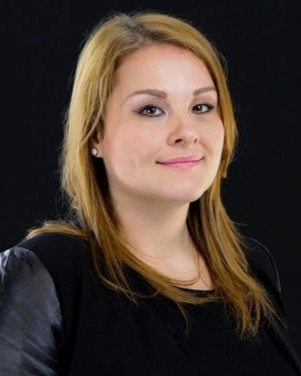
Giulia Fulvia Mancini
“For her contributions to imaging and scattering of nanostructured materials using high-harmonic soft X-ray sources and research on extreme ultraviolet imaging”.
Prof. Giulia Fulvia Mancini is an Associate Professor at the Physics Department of the University of Pavia (Italy). Prof. Gilles Pauliat chaired the ICO/IUPAP Young Scientist Prize in Optics 2021 Committee. She’s the head of the Laboratory for Ultrafast X-ray and Electron Microscopy (LUXEM) and Principal Investigator of the ERC Starting Grant ULTRAIMAGE. Her research group studies light-matter interactions and structure-property relations in functional nanomaterials and interfaces in the ultrafast domain, through innovative coherent imaging and scattering techniques from pulsed electrons and EUV/X-rays – tabletop High-Harmonic Generation (HHG) and facility-scale sources.
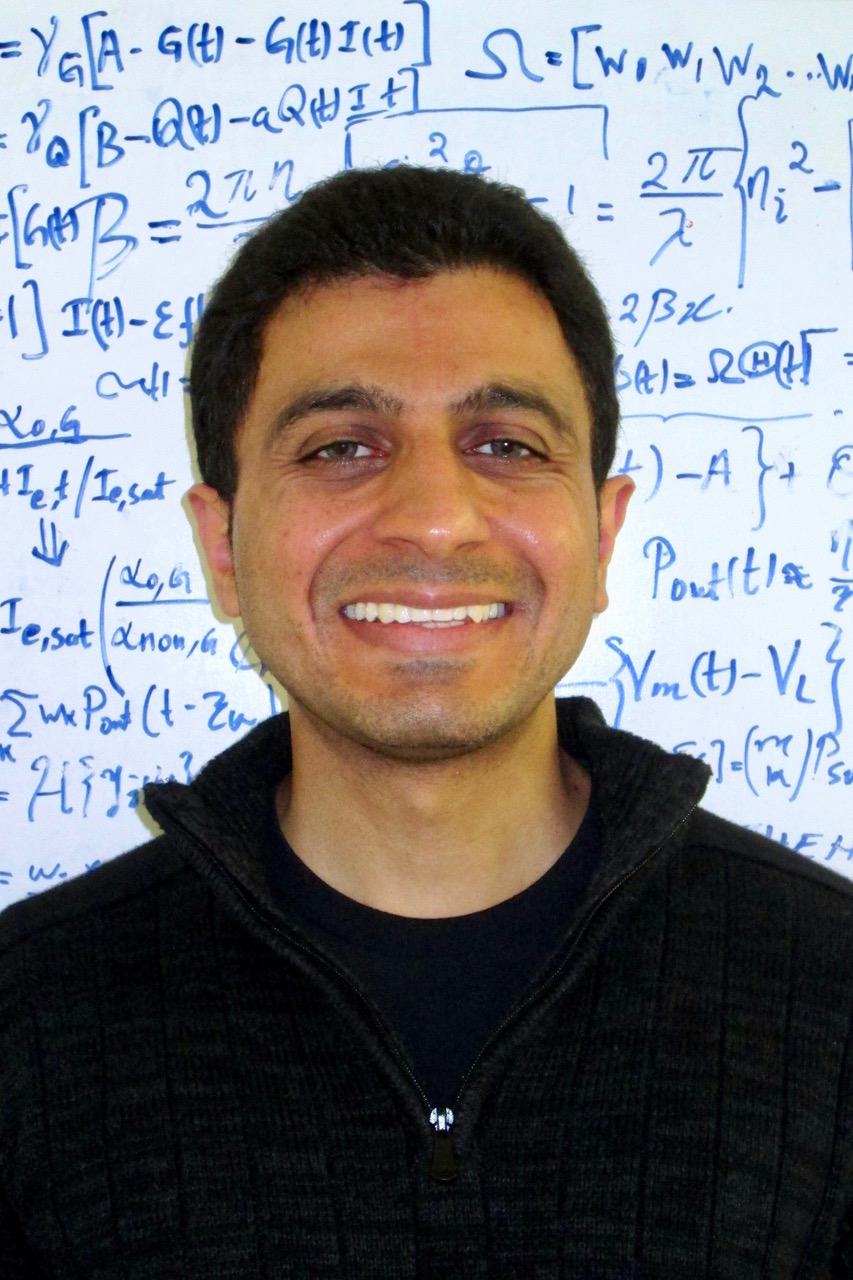
Bhavin Shastri, Canada
“For his pioneering contributions to Neuromorphic Photonics”.
Dr. Bhavin J. Shastri is an Assistant Professor of Engineering Physics at Queen’s University, Canada, and a Faculty Affiliate at the Vector Institute for Artificial Intelligence. He was an Associate Research Scholar (2016-2018) and a Banting and NSERC Postdoctoral Fellow (2012-2016) at Princeton University. He received the Ph.D. degree in electrical engineering (photonics) from McGill University in 2012. With research interests in silicon photonics, photonic integrated circuits, neuromorphic computing, and machine learning, he has published more than 65 journal articles and 80 conference proceedings, 5 book chapters, and given over 40 invited talks and lectures, including 2 Keynotes. He is a co-author of the book, Neuromorphic Photonics (Taylor & Francis, CRC Press, 2017), a term he co-coined. Dr. Shastri is the winner of the 2020 IUPAP Young Scientist Prize in Optics “for his pioneering contributions to neuromorphic photonics” from the ICO. He is a Senior Member of OSA and IEEE, recipient of the 2014 Banting Postdoctoral Fellowship from the Government of Canada, the 2012 D. W. Ambridge Prize for the top graduating Ph.D. student, and an IEEE Photonics Society 2011 Graduate Student Fellowship, amongst other awards.
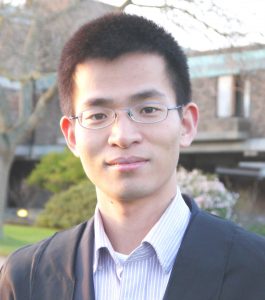
Chao-Yang Lu
“For significant contributions to Optical Quantum Sciences.”
Chao-Yang Lu obtained his Bachelor’s degree from the University of Science and Technology of China in 2004, and obtained his PhD in Physics from the Cavendish Laboratory, University of Cambridge in 2011. He was also a Junior Research Fellow of Churchill College. In Cavendish, he studied optical control of single electron spin confined in semiconductor quantum dots. Shortly after his PhD, he returned to China and became a Professor of Physics at the University of Science and Technology of China at his age of 28. His group currently focuses on quantum photonics, quantum computation, quantum communications, and quantum foundations. He has so far published more than 80 articles in journals including Reviews of Modern Physics, Nature and its research journals, Science, PNAS, and PRL, with 9000 google citations. His work on quantum teleportation of multiple degrees of freedom of a single photon was selected as by Physics World as “Breakthrough of the Year”. His work on single-photon sources, boson sampling, and astronomical-scale quantum interference were three times selected by Optics & Photonics News as “Optics in 2016, 2017, 2018”. He has been previously awarded OSA Fellow, Nature’s “Science Star of China”, Fresnel Prize, Newcomb Cleveland Prize, Nishina Asian Award, Xplorer prize, and Huangkun Prize on Semiconductor Physics.

Can Bayram
“For revolutionizing the way graphene has been employed and making major contributions to III-V photonic devices.”
Prof. Can Bayram is an Assistant Professor in the Department of Electrical and Computer Engineering of University of Illinois at Urbana-Champaign, IL, USA. He is an expert in III-V materials and photonic and electronic devices. He has performed more than 3,000+ epitaxial growths with metalorganic chemical vapor deposition (MOCVD) systems and fabricated detectors, light emitting diodes, solar cells, resonant tunneling diodes, and transistors in class 100 and 1000 cleanrooms totaling 20,000+ hrs. equipment usage. His current research interests lie in the intersection of novel III-V materials, hetero-structures, and photonic and electronic quantum devices. Particularly, his research group explores novel materials, devices, and their 3D hetero-integration on unconventional platforms such as graphene and silicon and investigates heat transport across/through semiconductors; efficiency droop mechanisms and remedies in AlInGaN emitters; and ultra-fast THz photonics/electronics.
Prof. Bayram worked as a Postdoctoral Research Scientist in the Silicon Technologies Division at the IBM Thomas J. Watson Research Center, Yorktown Heights, NY, USA from 2011 till 2014. His postdoctoral work at IBM on a novel means of thin film technology achieved record-breaking specific power solar cells and was featured on the cover of Advanced Energy Materials. He has – for the first time – integrated GaN-based devices on CMOS-compatible silicon substrates. This work was highlighted as the frontispiece in the Advanced Functional Materials issue. He demonstrated direct epitaxy of GaN on Graphene for the first time, as published in Nature Communications.
Prof. Bayram received the Ph.D. degree from Prof. Manijeh Razeghi, Center for Quantum Devices, EECS of Northwestern University, IL, USA with a focus on Solid State and Photonics in 2011. His thesis work has demonstrated the first ultraviolet regime single photon detection, the first hybrid LED, and the first GaN intersubband devices.
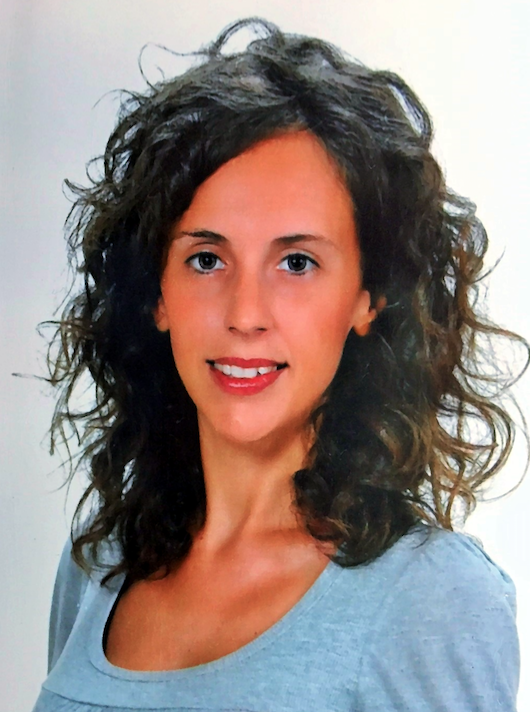
Giulia Grancini
“For her deep knowledge on photophysical properties and ultrafast light-induced dynamical processes”.
Giulia Grancini is Team Leader at the École Polytechnique Fédérale de Lausanne (EPFL) – Energypolis, currently based in Sion (Valais, Switzerland). She graduated from Politecnico of Milan in 2008 (MS in physical engineering). In 2012, she obtained her PhD in physics cum laude from the Politecnico of Milan with an experimental thesis focused on the realization of a new femtosecond-microscope for mapping the ultrafast phenomena at organic interfaces (see scheme below). During the PhD, she worked for one year as a visiting scientistat the physics department of Oxford University, where she pioneered new concepts within polymer/ oxide solar cell technology.
From 2012–2015, she has been a post-doctoral researcher at the Italian Institute of Technology (CNST@PoliMi) in Milan. In 2015 she joined the group of Prof. Nazeeruddin at EPFL, awarded with a Marie Skłodowska-Curie Fellowship. For her seminal contributions in the field of photophysics of hybrid perovskites, she received in october 2015 the prestigious National Award for Physics “EDISON, in memoria di Francesco Somaini” from the Edison Company & Alessandro Volta Foundation. Since 2016, she leads the PhysicsSolarLab at EPFL, aiming to address the fundamental physics behind advanced photovoltaic devices. In 2017, she was awarded with the Swiss Ambizione Energy Grant, which provides independent young researchers with up to 1 million CHF for leading innovative projects in the energy sector. Currently, she is also principal investigator of an European LaserLab project and co-manager of different Swiss projects with academic and industrial partners. She is author of more than 60 peer-reviewed scientific papers including a few in high-impact journals (more than 6000 overall citations) on the photophysical and optical properties of nano-structured semiconductors.
Giulia’s work focuses on the current scientific challenge of exploring the fundamental photophysical processes underlying the operation of advanced materials for optoelectronic application, with special attention to photovoltaics. She contributed with pioneering work to the understanding of the ultrafast interface physics that governs the operation of organic and hybrid perovskite solar cells. Examples include the visualization of the charge transfer and exciton dissociation dynamics involved in the photovoltaic action by developing state-of-the-art sub 10-fs ultrafast spectroscopy systems and the determination of the nature of the photoexcited species in hybrid perovskites and their dynamical evolution in the femtosecond/nanosecond timescale. Her works have been highly cited and recognized by the research community to be of utmost importance for guiding the development of efficient new generation solar technologies.
Giulia Grancini was awarded the IUPAP Young Scientist Prize in Optics 2017 for her “deep knowledge on photophysical properties and ultrafast light-induced dynamical processes”.
- For more information, visit https://people.epfl.ch/giulia.grancini?lang=en
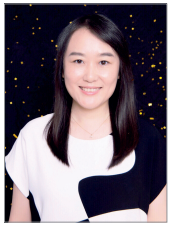
Laura Na Liu
“For her outstanding contributions to nano-optics, nanophotonics, nanoplasmonics, and metamaterials.”
Laura Na Liu is Professor at the Kirchhoff Institute of Physics, University of Heidelberg, and Group Leader at the Max-Planck Institute for Intelligent Systems, Germany. She graduated with a BS in physics from Jilin University, China, and a MS in physics from the Hong Kong University of Science and Technology. She obtained her PhD in physics with “summa cum laude” from the University of Stuttgart, Germany, in 2009. In 2010, she was post-doc at the Lawrence Berkeley Lab, University of California, Berkeley, USA. In 2011–2012 she was Texas Instruments Visiting Professor at the Electrical Engineering Department of Rice University, Houston, TX, USA. Since 2012, she is the leader of the Smart Nanoplasmonics group at the Max Planck Institute for Intelligent Systems, Stuttgart, Germany, and in 2015 she became Full Professor at the Kirchhoff Institute of Physics of the University of Heidelberg. Her research group focuses on developing sophisticated and smart plasmonic nanostructures for gaining precise insight into cell biology and catalytic chemistry.
She has received multiple awards: between them a Chinese Government Award for outstanding students abroad in 2008. In 2012, she was awarded the Sofja Kovalevskaja Award of the Alexander von Humboldt Foundation, which provides young researchers with up to €1.5 million as risk capital for innovative projects at an early stage of their careers. Na Liu proposed to use nanoplasmonics to observe biological and chemical processes at the level of individual particles, by combining gold nanoparticles with DNA and observing the dynamics of chemical reactions with high-resolution microscopes. She was awarded the Elisabeth Schiemann-Kolleg Fellowship of the Max Planck Society and the Heinz Maier-Leibnitz Prize of the Deutsche Forschungsgemeinschaft (DFG) in 2013. In 2014, her project “dynamic nanoplasmonics” was awarded a Starting Grant (€1.5 million) of the European Research Council (ERC). During the International Year of Light, the European Optical Society (EOS), awarded her with the Light 2015 Young Woman in Photonics Award.
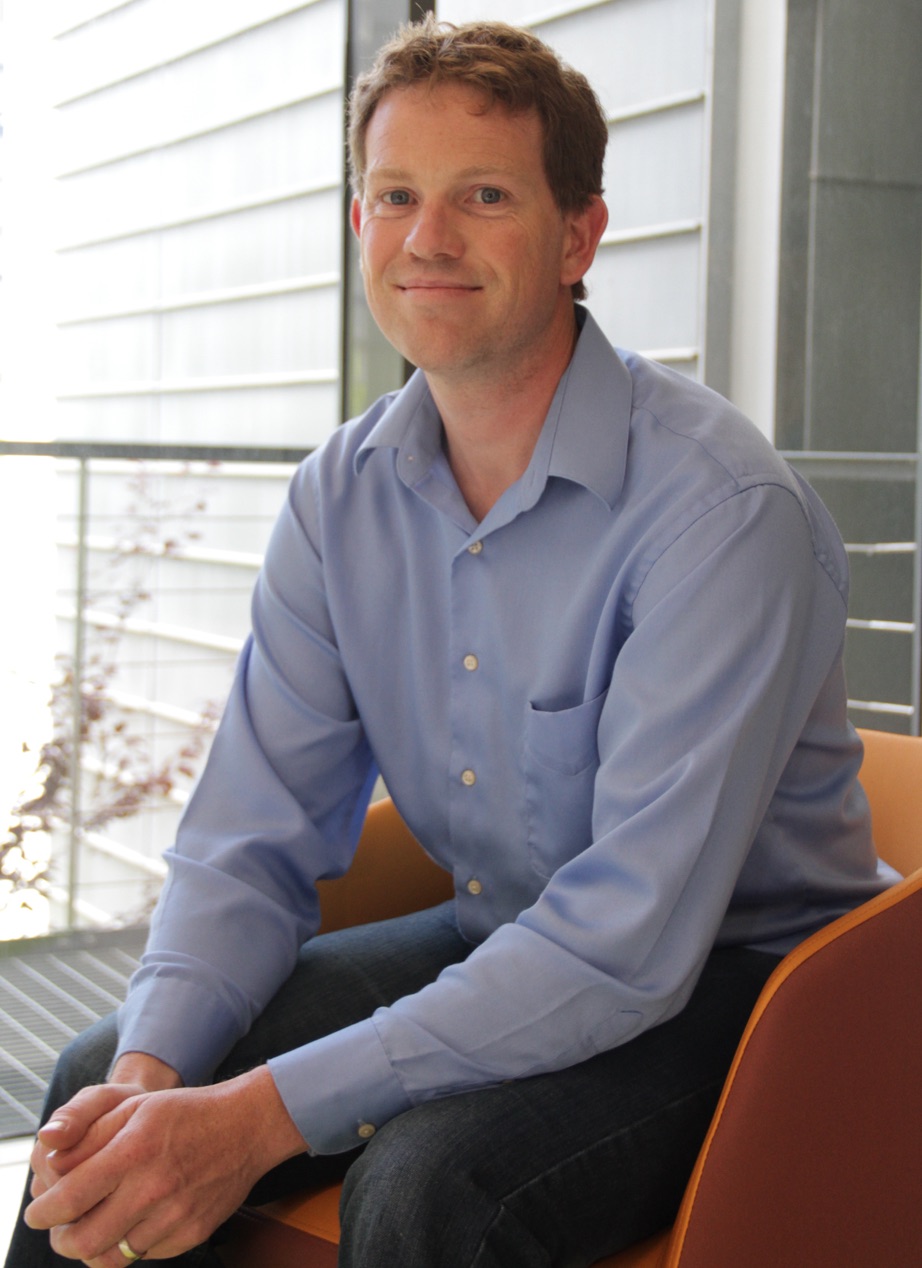
Frank Koppens
Prof. Frank Koppens obtained his PhD in experimental physics at the Kavli Institute of Nanoscience, The Netherlands. After a postdoctoral fellowship at Harvard University, since August 2010, Koppens is a group leader at the Institute of Photonic Sciences (ICFO). He has received the Christiaan Hugyensprijs 2012, the ERC award as well as two ERC proof-of-concept awards. Prof. Koppens is leader of the optoelectronics workpackage of the graphene flagship (1B€ project for 10 years). Since 2015, Koppens is also holder of an ICREA professorship.
The quantum nano-optoelectronics group of Prof. Koppens focuses on both science and technology of novel two-dimensional materials. The goal of current projects is to study the interactions between light, plasmons and electrons in graphene and 2d materials, at ultra-fast timescales and nano-scale lengthscales. The group also develops devices with applications for wearables, sensing, photodetection, infrared imaging, power conversion and nano-scale light processing and switching.
In total, Koppens has published more than 40 refereed papers (H-index 31), amongst which Nature (2x), Science (3x), Nature Physics (5x), Nature Photonics, Nature Materials, Nature Nanotech. (5x), Phys.Rev.Lett.(8x) and NanoLetters (6x).
Total number of citations >8000.




